The Sustainable Textile Monthly Challenge
My name is Margeaux Lim and I am the Artist Residency intern at the Textile Arts Center (TAC). During my time at TAC I started the Sustainable Textile Challenge, which is a monthly prompt to inspire sustainable textile making and create awareness of the objects that surround us that can further be upcycled as art materials. Use the monthly prompt to think outside of the box, transforming forgotten or discarded items into objects of renewed beauty, utility and meaning. The sharing of these projects will promote new ways of creating and re-thinking of materials. *See the monthly prompt at the bottom of the page*
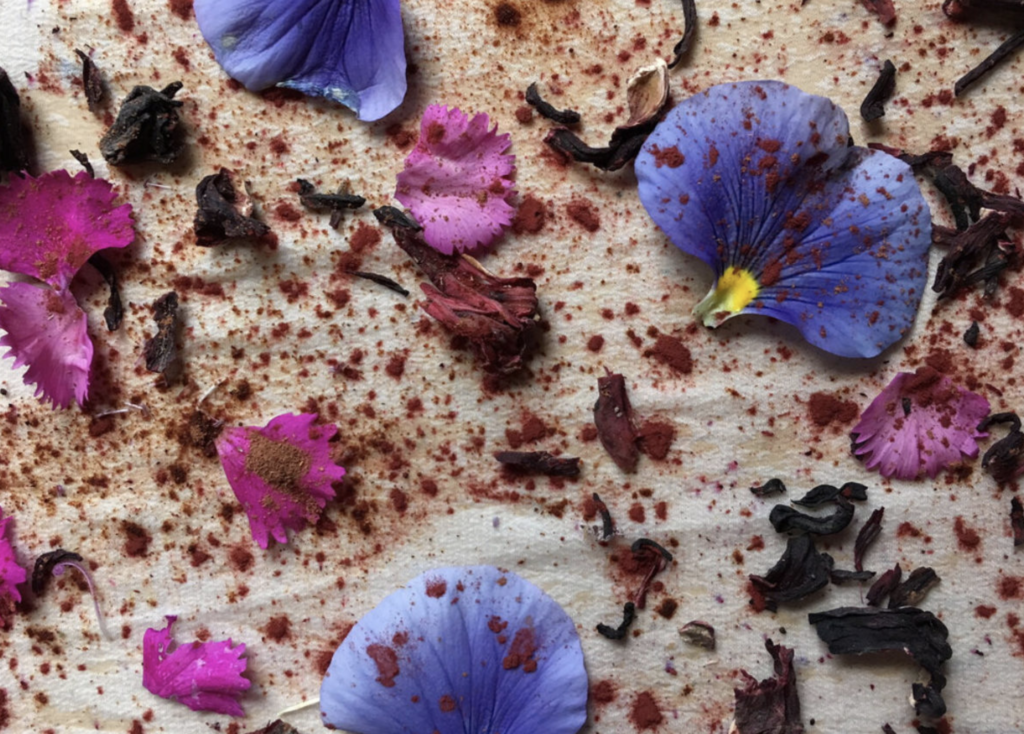
The textile industry is well known for consuming large amounts of energy, water, and natural resources. Today, more consumers are aware of greenhouse emissions, global warming and an increased carbon footprint due to textile pollution. The manufacturing of fibre to a finished garment not only poses a great risk for the future, but is also a human rights issue where textile laborers earn unfair wages and work in improper conditions. Harmful chemicals also affect the health of both textile workers and wearers of clothes, which then escape into the environment. When washed, some garments release plastic microfibres, of which
“Around half a million tonnes every year contribute to ocean pollution.” (Ellen MacArthur Foundation).
(Ellen MacArthur Foundation).
Large amounts of non-renewable resources are extracted to produce clothes that are often used for only a short time. These materials are mostly sent to landfills or incinerated.
“More than USD 500 billion of value is lost every year due to clothing underutilisation and the lack of recycling...For instance, total greenhouse gas emissions from textiles production, at 1.2 billion tonnes annually, are more than those of all international flights and maritime shipping combined.”
(Ellen MacArthur Foundation)
By thinking sustainably we can increase the value of local production, prolong the life cycle of materials, increase the value of timeless garments, reduce the amount of waste, and decrease the harm to the environment.
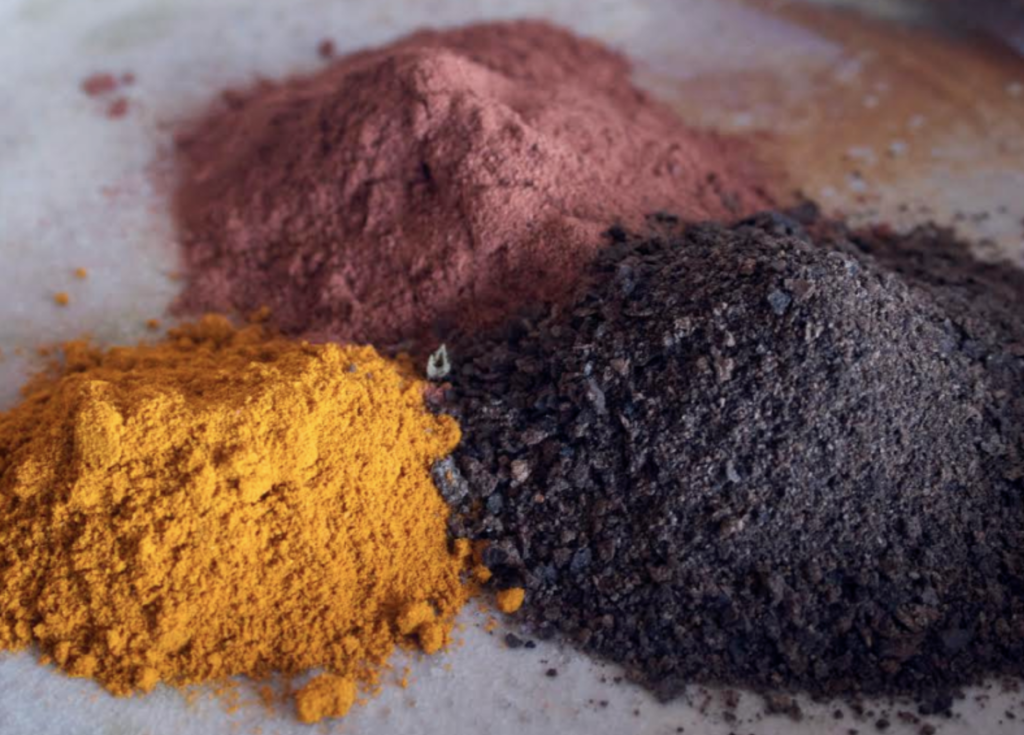
Textile artists working with recycled or reclaimed goods give new life to objects that are often seen as purely functional or disposable. These upcycled objects can go farther than easing an artist's social consciousness. The materials being used often have an inherent history, which can offer a powerful starting point and make for a more meaningful process. Upcycling was born of necessity, a force that drives the creative reuse of materials in many parts of the world today. When resource scarcity impacts you directly, it’s natural to draw out a product’s life. And when that product no longer fulfills its purpose, you find a new purpose for it. What is new about the process is its prevalence in the developed world. Increasing environmental awareness has driven us to live more sustainable lives, making creative reuse fashionable.
Below are 3 diverse textile artists doing incredible things with recycled materials:
El Anatsui is an internationally acclaimed artist who transforms simple materials into intricate tapestries that create distinctive visual impact. He uses discarded resources such as liquor bottle caps, printing plates and cassava graters to create sculpture that defies a category. El Anatsui explains,
“[I am interested in textile because it is] Always in motion. Anytime you touch something, there is bound to be a change. The idea of a sheet that you can shape and reshape. It can be on the floor, it can be up on the ceiling, it can be up on the wall, all that fluidity is behind the concept.”
(The Nomadic Aesthetic)
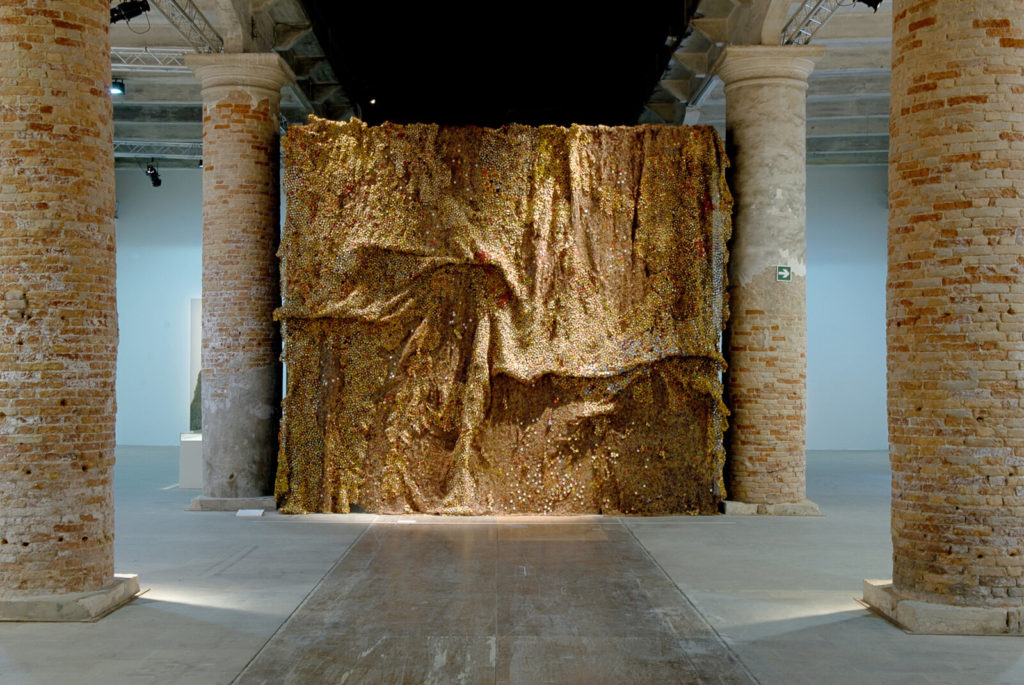
Kevin Beasley has created sculptures and installations made from found materials, including clothing, sports equipment, and personal artifacts. Using polyurethane foam and resin to give these objects their own solidity and form, Beasley molds them into wall assemblages and standalone sculptures. T-shirts, colorful house dresses, and durags take their own shape, referencing the bodies that may have once inhabited them.
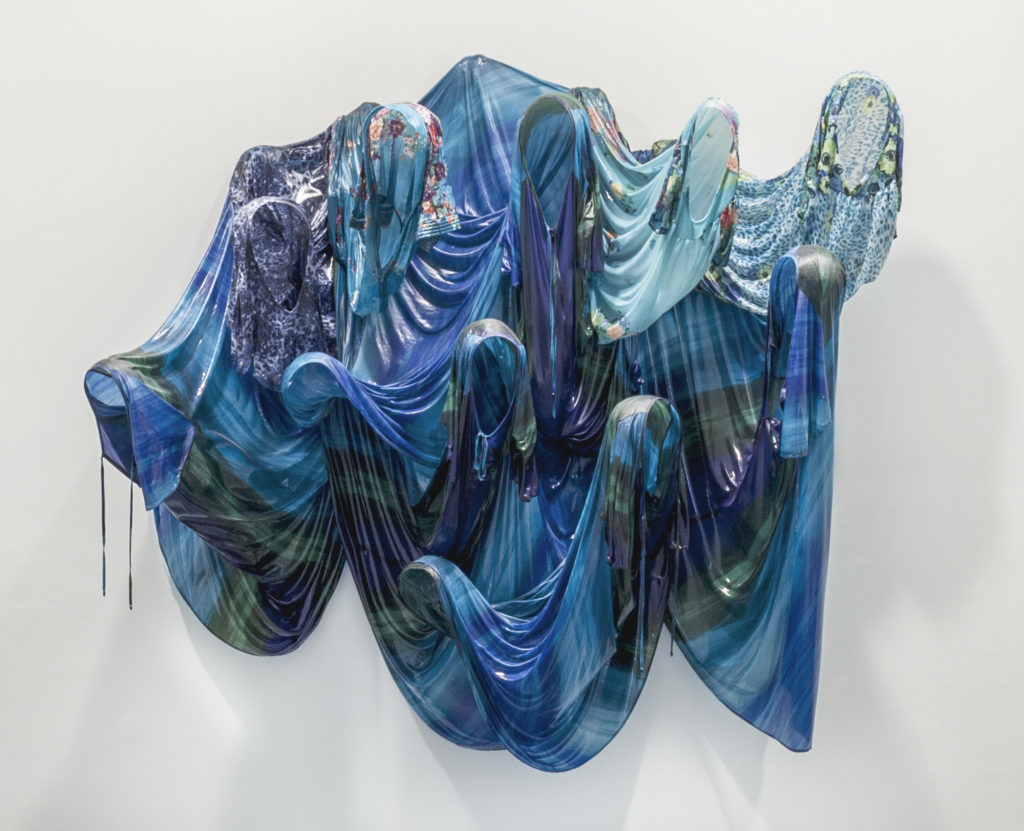
Renae Barnard is a multi-disciplinary artist interested in exploring the network of interactions between environment, perception, and well-being. Bernard explains,
“I’m utilizing the waste of the furniture manufacturing industry to create the sculptural foundations of my work. This material is otherwise unusable, too small of scraps to be repurposed within the mills directly.”
(Mine and Yours Exhibition)
Foam supplemented with cotton and polyester fiberfill scraps is built up on a wood panel with wheat paste, which takes weeks and sometimes months of waiting between layers.
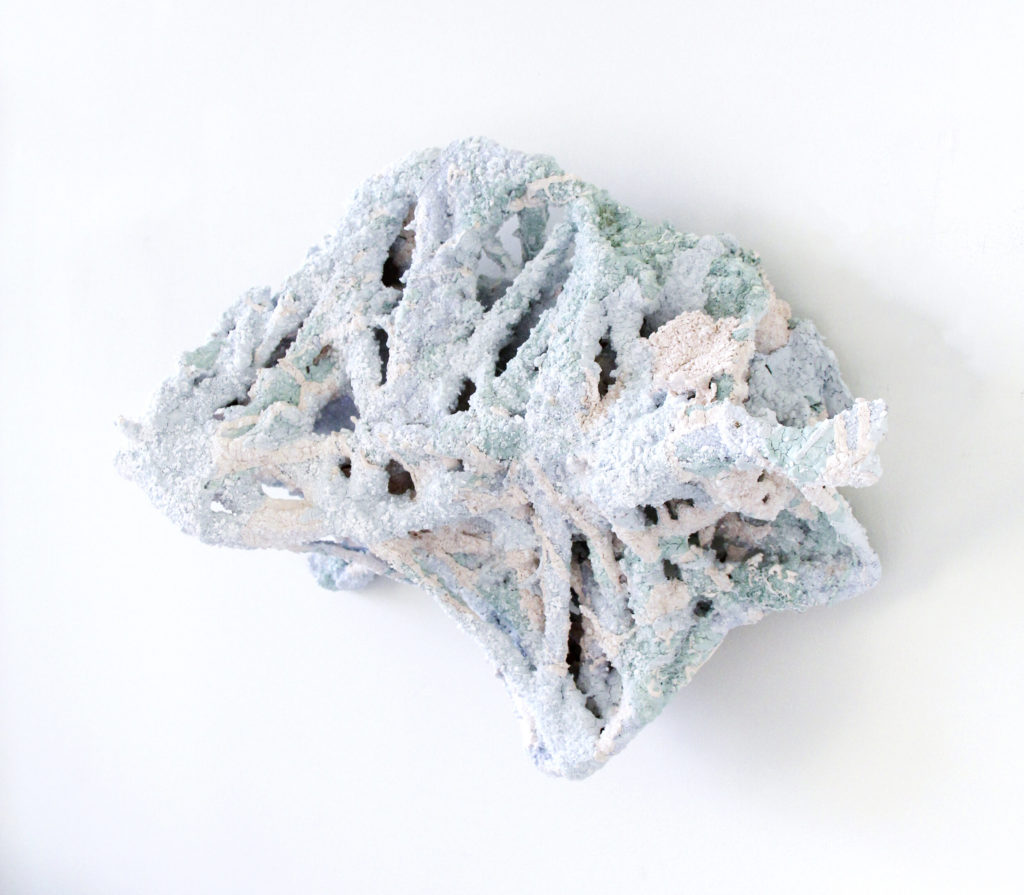
Interested in working with upcycled materials in your art practice? Here are some ideas for sourcing:
There are many companies and organizations that are more than willing to discard their waste somewhere other than the landfill. You can reach out to event places to collect their leftover flowers that can be utilized for natural dyeing. Along with conscious restaurants and cafes that can supply their leftover food scraps, compost, and coffee grounds, which can also be used for natural dyes. To upcycle fabrics, source from your local thrift stores for cheap fabric/clothing. This can be used for quilting, weaving, crocheting, or creating a new garment! You can also collect scraps from manufacturing mills like furniture mills and textile mills. Much of the waste from these mills are too small to recycle and end up in the landfill. Paint stores give free/discounted paints that have been mixed incorrectly. Dumpster diving may sound intimidating, but can also be a gold mine. Many companies throw away products that aren’t being sold or have a surplus of. Also, befriend your local yarn community to share yarns and other equipment. There is also The Fabscrap Shop located in Manhattan and Brooklyn where you can volunteer for free fabric, or get $5/pound ($3/pound). You can also Shop online and attend their events and pop-ups scheduled every month around NYC. Don’t be afraid to ask around, many companies and organizations care where their waste goes and are happy to place it in your hands.
By recycling and creating sustainably we can lower our dependency on petroleum-based processes, reduce greenhouse gas emissions and decrease the overall carbon footprint. The future of making hangs by a thread every day. So let’s produce and consume products that are better for our future by knitting sustainability across the textile and apparel community.
Use this link to access a database of companies in the Brooklyn and Manhattan area willing to donate or discount their waste to artists. This spreadsheet is a work in progress. If you know of a company willing to donate, please fill out this form: https://docs.google.com/spreadsheets/d/1FmwqQ6PIYVYl0n_MsVFw-ve1xY6uUZCw8YIlVS8t5Uk/edit#gid=0
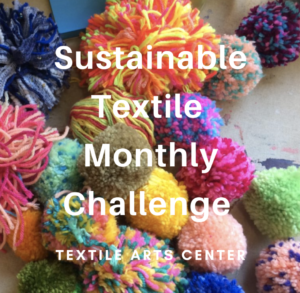
Make your own Loom and a weaving out of found materials. Think outside the box and use the things around your house or in nature to create a loom and weaving, transforming and giving new life to these forgotten materials. Please submit your projects by the end of each month to [email protected] or hashtag your instagram post at #sustainabletextilemonthlychallenge where you can be featured on our instagram stories!
Here are a few links for inspiration:
Balakrishnan, Rekha. “From Being Passionate about the Environment to Starting a Successful Organic Brand: a Homemaker's Journey.” YourStory.com, 16 Dec. 2020, yourstory.com/herstory/2020/12/woman-entrepreneur-sustainable-lifestyle-products
Barnard, Ranea. “Sustainable Art - Story.” Renae Barnard, 17 June 2020, www.renaebarnard.com/story/tag/sustainable+art.
Ellen MacArthur Foundation, A new textiles economy: Redesigning fashion’s future, (2017, http://www.ellenmacarthurfoundation.org/publications).
Moma. “Inbox: Kevin Beasley: MoMA.” The Museum of Modern Art, www.moma.org/calendar/exhibitions/3676
Shainman Gallery, Jack. “El Anatsui " Artists " Jack Shainman Gallery.” " Artists " Jack Shainman Gallery, 2018, jackshainman.com/artists/el_anatsui.
Textile, Luxiders. “Revolutionary Sustainable Textiles for the Modern Home: Heimtextil 2020.” Sustainable Fashion - Eco Design - Healthy Lifestyle - Luxiders Magazine, 27 Jan. 2020, www.luxiders.com/sustainable-textiles/